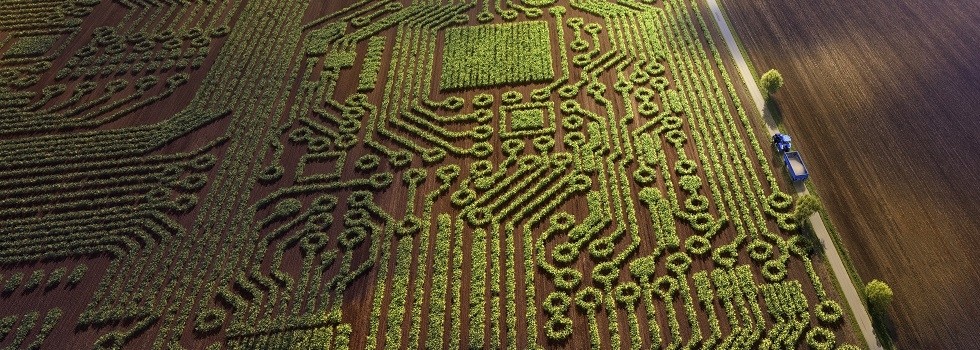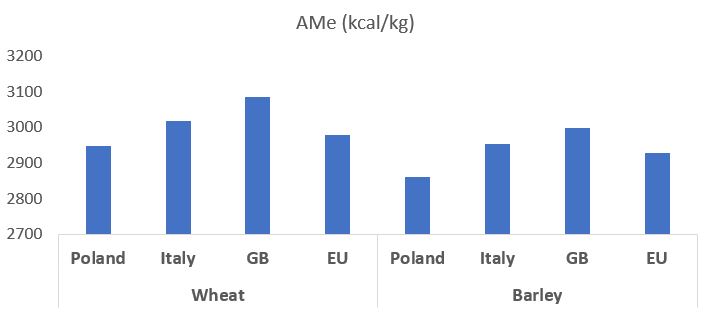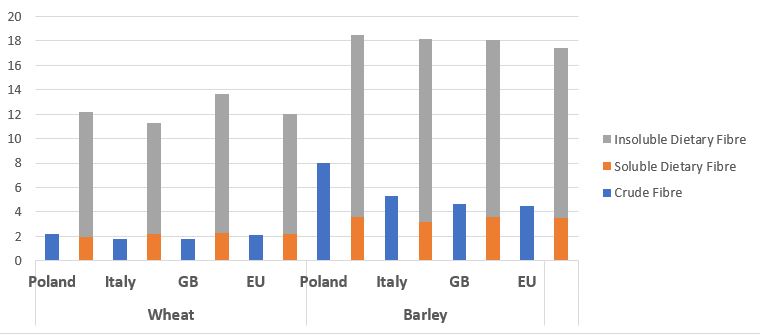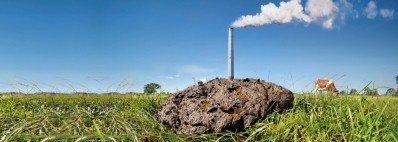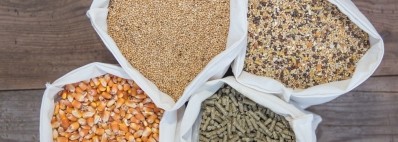Promotional Features
Putting feed intelligence into practice with raw materials
Precision nutrition in animal nutrition is as important as ever for producers as they look to cope with high feed costs and remain competitive. With feed accounting for up to three quarters of animal production costs, rapid rises in cereal crop prices can hit profit margins hard.
As well as price, producers need to contend with quality issues as depending on geography, time of year, soil quality and growing conditions, as well as harvesting and post-harvesting circumstances, among other factors, even individual raw material deliveries from the same source can potentially show substantial disparity in nutritional quality.
We collected data about cereal quality from Great Britain, Italy and Poland to gather more evidence on this issue. In Great Britain, the apparent metabolizable energy (AME) variation in wheat could be as high as 3,086 kcal/kg, however, in Poland it was as low as 2,948 kcal/kg. Italy came between the two. This 150 kcal/kg difference between the highest and lowest amounts represents a considerable potential saving in terms of diet formulation and shows the benefit of a deep understanding of the raw materials supply market. The trends were similar for other raw materials, such as barley (see Figure 1).
Figure 1. Apparent metabolizable energy (AME) average values in wheat and barley samples from Great Britain, Italy and Poland (and the EU)
AB Vista Feed Quality Service
This raw material variability means there is a risk of either under or over-estimating the nutrients in animal feed. The result is either financial losses and/or sub-optimal animal performance. Producers need to maintain high safety margins when formulating feed to ensure their animals are receiving the correct levels of nutrients; an unwelcome additional consideration and cost.
Assessment methods
Wet chemistry is one well-used method of assessing raw materials, to minimize this variability and the potential resultant economic impact, but the time from sample submission to receiving the results usually averages between one and two weeks. The process is also expensive, limiting the number of samples sent, and compromising the accuracy of information concerning the characteristics, and any potential variability, of the raw material being assessed.
Instead, producers can turn to Near Infrared Spectroscopy (NIR) for ingredient and feed quality control. It offers a quick, cost effective and non-destructive alternative to conventional chemical assays.
NIR operates using light from the near infrared range of the electromagnetic spectrum. With this it measures the absorbance of a sample at different wavelengths. By adding this data into calibration models the nutritional composition of a feed or ingredient sample can be predicted. This includes considerations such as fat, moisture, protein and starch.
NIR calibrations now offer a wider scope than these traditional parameters. This can include predictions about reactive and total lysine in protein sources, in vivo energy values in cereals, as well as phytate-P and non-starch polysaccharides (NSP).
A better understanding of fibre
When utilising the latest software and hardware, NIR facilitates a more in-depth understanding of raw material and feed quality. For instance, there is a long-held misconception among many in the industry that there are low levels of fibre in monogastric diets. However, we believe that, using NIR technology to increase our understanding of soluble and insoluble NSPs, we could be able to show the connection between animal performance and fibre. This would allow nutritionists to start to determine their soluble to insoluble ratios or other chemical factors.
We have developed an NIR calibration which allows for the rapid determination of NSP within feed ingredients. NIR is a well-established technology, but previously few attempts have been made to create calibrations for NSP determination in feed and foodstuff.
AB Vista collected 1,700 feed ingredients from 24 countries over a five-year period to create this NSP calibration. The collected samples were split into three categories: cereals, protein meals and fibrous materials. All the ingredients were ground and then scanned. Since the development of the NSP calibration over 86,000 samples have been scanned to determine the NSP content for various feed ingredients.
As our knowledge of soluble and insoluble NSPs advances, being able to measure feed ingredients rapidly through NIR may enable us to link these fibre fractions with animal performance. The NSP Feed Ingredient database developed by AB Vista (An introduction to Fibre Analysis), is one of the first databases of its size and is the initial step to allow nutritionists to begin to determine their soluble to insoluble ratios or other chemical factors, such as the arabinose to xylose ratios and see how they impact on animal performance.
Figure 2 shows that crude fibre represents only around 20% of total dietary fibre in wheat and barley, and the majority is insoluble fibre. Developing a better understanding of these fibre components will help feed producers and nutritionists to understand how to optimise it effectively.
Figure 2. Crude and total dietary fibre (soluble and insoluble) averages in wheat and barley samples from Great Britain, Italy and Poland (and the EU)
AB Vista Feed Quality Service
Using accurate data from NIR, producers are much better placed when selecting suppliers as they have a better understanding of both raw materials and feed characteristics. This higher level of feed intelligence means better feed formulation – taking into account both feed ingredient cost and nutrient content – improved animal performance and ultimately, increased profitability.
Conclusion
High prices and high safety margins don’t mix with optimal animal and economic performance. Therefore, an increased understanding of the raw materials in feed is becoming essential.
NIR needs to be utilised as a key tool to predict the nutritional content of feed and raw materials, especially fibre, as well as to control feed formulation; something which can be made even more effective by using our Fibre Calculator (https://www.abv-calculators.com/fibre). Working in this way can reduce cost and allows a swifter turnaround time when compared to traditional chemical-based analysis.
NIR’s rapid results and ease of use mean that ingredient quality analysis can be conducted on a far more frequent basis. This will result in a higher level of feed intelligence, and more consistent, favourable results.
